|
Discover
the hidden treasures of Drake Bay, Costa Rica with Tracie
"The Bug Lady"

Home

Tour
Basics

Meet
the Bug Lady

Tales
from the Edge

Media

Reservations



Facts about Drake Bay, Costa Rica

Travel To
Drake Bay

Drake Bay
Area Map

Hotel
Information

Tips for Travelers

Tours

Recommended
Reading

Links

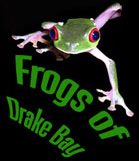



|
|
|
Bats
are some of the most diverse and misunderstood
mammals on the planet today. They inspire fear
and disgust and are often persecuted because
of it.
People's
fear of bats is probably derived of myths,
concerns over the spread of disease and
because they are simply so different than
humans, as well as every other mammal.
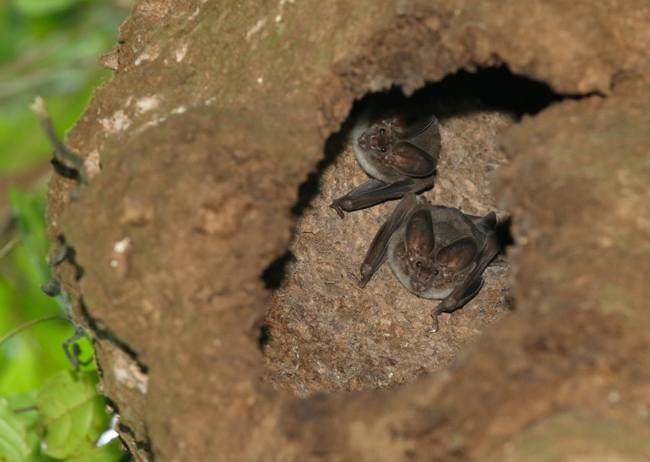
White-throated Round-eared
Bats roosting in a termite mound -
Lophostoma silvicolum
Until
the 1960's scientists didn't know much about
bats. It was not until they discovered bats
could be captured in Japanese Mist Nets
that serious studies on them became possible.
Bats
certainly are unique. They are the only
mammals with the ability to fly. Among their
ranks are the only mammals that subside
chiefly on pollen and nectar and, of course,
those that feed exclusively on blood.
When
looking at the benefits provided by bats and
comparing them with their negative aspects,
one quickly realizes that bats play an
essential role in maintaining a balance in our
environment. Their benefits far outweigh any
of their negatives.
|
|
Bats'
ability to fly is one of their
most amazing adaptations.
Their hand has evolved into a
wing covered with a stretchy,
leathery, and very durable
membrane. T
he
word Chiroptera, which is the
name of their Order, literally
translates into "handwing".
This
is strikingly clear when
viewing the photo on the left.
The bats fingers are extremely
large and run from wrist to
the bottom of the wings while
the thumb sticks straight up
and is not covered by the
leathery membrane that covers
the other four fingers.
Another
incredible adaptation is their
ability to navigate by using
echolocation. Echolocation
works the way a sonar radar
would. Bats emit high
frequency sounds. The sound in
turn bounces off their
surrounding environment and
returns to them. The sounds
are emitted by way of the bats
mouth and nose and may travel
at approximately 340 meters
per second! The bats then
analyze the time it takes for
the echoes to return to them
and are able to tell how far
away an object is. This gives
the bats a perfect picture of
their surroundings even on the
darkest nights.
|
|
|
|
With
about 1400 identified species, bats
are the second most diverse mammal
group, second only to rodents. They
are found in every continent except
Antarctica and make up about one
quarter of all mammal species.
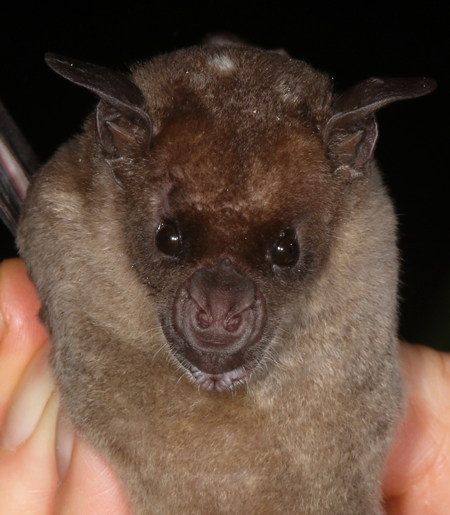
Pale
Spear-nosed Bat - Phyllostomus
discolor
Nearly
half of the mammals in Costa Rica are
bats. We have 120 confirmed species in
Costa Rica, about eight percent of the
world's known bat species. Out of the
120 bat species present in Costa Rica,
80 have been collected on the Osa
Peninsula. This number is quite
remarkable when you think about it.
The United States, which has 150 times
the landmass of Costa Rica, only has
47 bat species and the entire
continent of Australia only has 70
recorded species.
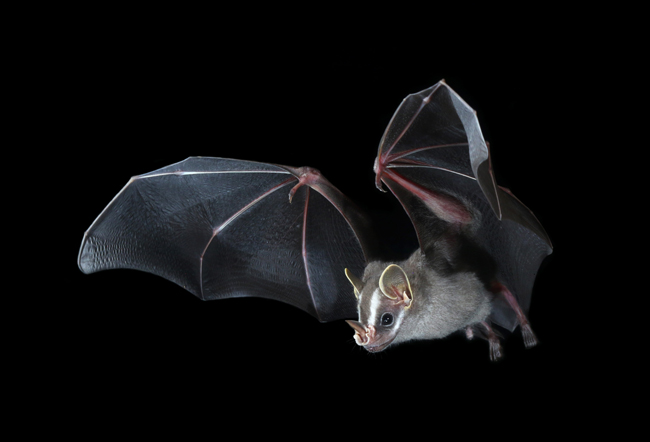
Mesoamerican
Tent-making Bat - Uroderma convexum
In Costa Rica, there
is great diversity among bats. They
differ in where they hunt, how they
breed and what they eat. They range in
size from the tiny Black Myotis (Myotis
nigricans), which has a wingspan
of about 5 centimeters and weighs
about 5 grams, to the False Vampire (Vampyrum
spectrum), which can have over
80 centimeters in wingspan and weigh
about 200 grams. The False Vampire
feeds mainly on sleeping birds and can
take Motmots, Pigeons and Parrots
weighing about as much as the bat
does!
|
|
 A
large variety of bat species means a
high degree of specialization among
them. Individual species usually stick
to certain height levels of the forest
when they forage. Some may forage over
the water or way above the forest
canopy. The height and location in
which they forage is dictated by their
very specialized diet. In Costa Rica
about 53 percent of bat species feed
on insects, 25 percent feed primarily
on fruit, 10 percent eat mostly nectar
and pollen, about 7 percent feed on
other vertebrates or their blood, and
at least 5 percent are omnivores. A
large variety of bat species means a
high degree of specialization among
them. Individual species usually stick
to certain height levels of the forest
when they forage. Some may forage over
the water or way above the forest
canopy. The height and location in
which they forage is dictated by their
very specialized diet. In Costa Rica
about 53 percent of bat species feed
on insects, 25 percent feed primarily
on fruit, 10 percent eat mostly nectar
and pollen, about 7 percent feed on
other vertebrates or their blood, and
at least 5 percent are omnivores.
What they eat will in
turn dictate when and how they breed.
Female bats give birth while roosting
and the pups are usually born tail
first. After their feet emerge, they
will clamp onto the mother's fur and
help pull themselves out. Newborn pups
may weigh as much as 40 percent
of their mother's body weight! Note
the baby being nestled underneath the
Brazilian Long-nosed Bat (Rhynchonycteris
naso) female at the bottom
of the row of bats pictured on the
right.
Research
seems to indicate that bats time their
reproductive cycles so that their
offspring is weaned at a time of year
when food is most abundant.
Insectivores
usually have only one litter per year
and it is normally at the end of the
dry season. This way the pups will be
weaned by early rainy season when a
large amount of insects are
available to feed on.
One of
our smallest bats, the Black Myotis (Myotis
nigricans), breaks this pattern.
It is unique in that females may have
up to three litters per year. These
bats are insect eaters, but they
manage to produce litters continuously
throughout the year with a short pause
at the end of rainy season.
Because
in the tropics flowers and fruit are
available most of the year, bats that
feed on fruit and nectar usually have
a litter at the end of dry season and
another litter late in the rainy
season.
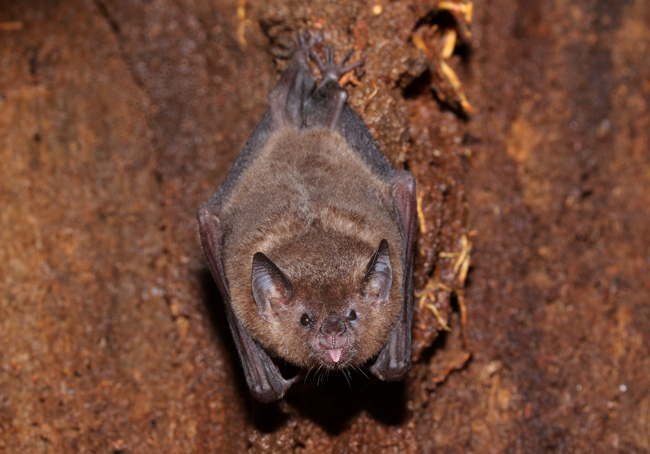
Long-tongued
Bat - Glossophaga sp.
Finally, the Common
Vampire (Desmodus rotundus)
will breed throughout the year, with
individual females producing about two
litters per year. These bats enjoy a
stable food source and are unaffected
by the changing of the seasons.
|
|
Bats
generally have cryptic coloration and their
fur is usually adorned with different shades
of black or brown. Greater Bulldog Fishing
Bats (Noctilio
leporinus) have beautifully
colored orange fur. We also have two species
with white fur, which is unusual among bats.
The Northern Ghost Bat (Diclidurus albus),
which is found on the Osa Peninsula, and the
Honduran Tent-making Bat (Ectophylla alba)
which is only found on the Caribbean Slope.
These tiny bats are about the size of a wine
cork and with their fuzzy white fur and
yellow ears and nose are probably the most
beautiful bats in the country.

Honduran Tent-making
Bats - Ectophylla
alba
|
|
|
Another amazing bat group are
Disk-winged Bats (Thyropteridae). These bats are
unique in that they are the only bats in
America that roost right side up. They have
suction cups on their thumbs and on their
heels which allow them to stick to smooth
surfaces. We have found them sticking to the
smooth tile on our bathroom wall!

Spix's Disk-winged
Bats - Thyroptera tricolor
|
|
There are two species of
Disk-winged Bats in Costa Rica, both are
aerial insectivores and both species are found
in Drake Bay. Spix's Disk-winged Bats roost
inside new, rolled up, heliconia leaves in the
process of unfurling. After the leaf has
opened too wide for the bats' taste, they move
on to another leaf.
Peters' Disk-winged Bats
are rare to see, but we have also found them
in Drake Bay. These tiny bats live in small
colonies and usually roost inside cones which
form on dead banana leaves. We found and
photographed the colony of Peters' Disk-winged
Bats shown below in Drake Bay.

Peters'
Disk-winged Bats - Thyroptera discifera
|
|
The
Fringe-lipped Bat (Trachops cirrhosus)
is another incredible bat that is well worth
mentioning. This bat also feeds on insects,
but is a specialist on frogs. It locates
calling male frogs, not by echolocation, but
by using its sense of hearing. Studies have
shown that the bat can distinguish between
toxic frogs and edible ones based solely on
their call. Researchers have carried out
experiments where they play the calls of toxic
frogs that don't live in the area and the bat
still knows to avoid them! If they play calls
of edible frogs, the bat will violently attack
the speakers! Scientists think the bats can
distinguish between the two based on the
frequency of the frog's call.

Fringe-lipped Bat - Trachops
cirrhosus
After learning a little bit
about these exceptional animals, it is easy to
quickly develop a passion for bats. Their
diversity in shape, biology, and abilities are
nothing short of extraordinary. Not only are
they fascinating, but they are incredibly
beneficial to humans and the environment.
|
|
Insect eating
bats play a crucial role in
controlling insect
populations. Insectivore bats
consume a huge numbers of
insects that could potentially
cost farmers and foresters
billions of dollars and spread
disease among humans. It is
estimated that just the 20
million Brazilian Free-tailed
Bats that inhabit Bracken
Cave, in Texas, devour some
225 metric tons of insects
every night!! On average a
family car weighs about 1.5
metric tons, meaning that this
bat colony alone consumes
approximately the weight of
150 family cars in insects per
night, a truly a staggering
feat!

Northern
Big-eared Bat roosting in a hollow
tree - Micronycteris
tresamici
Little Brown
Bats often eat mosquitoes and
can catch up to 1,200 small
insects per hour. A typical
Big Brown Bat colony can
consume enough Cucumber
Beetles to avoid tens of
millions of the beetle's
larvae depleting a farmer's
crop. Imagine a world
without bats. The guano
produced by these insectivore
bats is also a valuable
fertilizer.
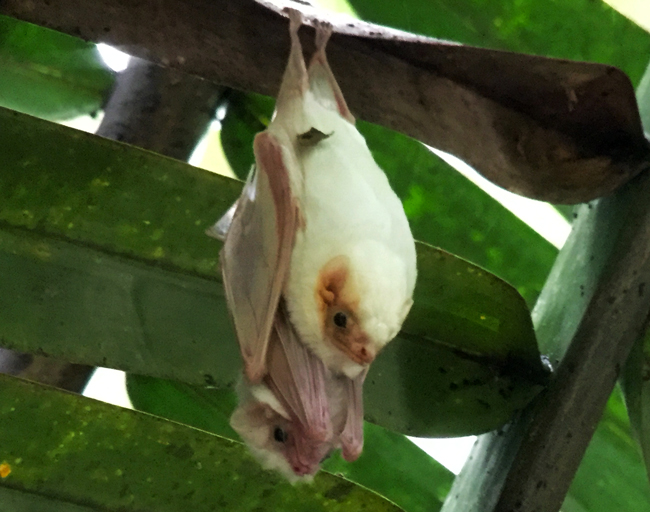
Female
Northern Ghost Bat with her pup -
Diclidurus albus
It is
estimated that bats are
responsible for the
pollination and seed dispersal
of hundreds, possibly
thousands, of trees and
plants. Plants and trees like
Ficus, Cecropia, Solanum, and
Piper depend on
bats for seed dispersal.
Scientists estimate that Balsa
Trees (Ochroma pyramidale)
rely solely on nectar and
pollen eating bats for
pollination.
Fruit eating
bats play a key role in
regenerating forests. Unlike
birds, who normally defecate
while perching, bats tend to
defecate in flight. This means
that seeds will fall to the
ground and develop far from
the shade of the parent tree,
perhaps in an open field.

Mesoamerican
Tent-making Bats - Uroderma
convexum
|
|
Unfortunately, bat populations
are declining worldwide. The
causes are the usual suspects:
global warming, destruction of
habitat, human persecution,
pollution and the use of
pesticides. Pesticides are
especially harmful. They are
used on the insects that are
consumed by bats, and end up
poisoning the bats. This has
led to serious declines in
some areas.
Another
budding danger to bats is the
growing number of wind
turbines being erected to
harvest electricity. 
It
seems that bats, unlike the
birds that hit them by accident,
may be attracted to the
turbines. One study in West
Virginia in a site with 44
turbines documented between
1,300 and 2000 bats killed
during a six week period.
But perhaps the most troubling
development for bats in the
last few years is White-nose
Syndrome. This mysterious
disease has killed tens,
perhaps hundreds of thousands
of bats in North America. Up
to 95 percent of the
population of infected bat
colonies are being wiped out
throughout hibernation caves
in New York, Vermont,
Massachusetts, Connecticut,
and possibly Pennsylvania.
They call it White-nose
Syndrome because infected bats
exhibit a white fungus on
their noses.
The scariest thing is that
scientists have no idea what
is causing this bat epidemic
or how to stop it. Infected
bats are leaving their
hibernation caves earlier than
normal in a severe state of
emaciation and dehydration.
Many also have wing injuries,
apparently acquired during
their hibernation, and the
bulk of the bats belonging to
infected colonies are usually
discovered lying dead on the
cave floors.
We encourage all of our
readers to visit the Bat
Conservation International
Website at
http://www.batcon.org/home/default.asp
and find out what you can do
to help save these remarkable
animals. It is time we
realized how important bats
really are to our planet and
take the necessary steps to
protect these wonderful
creatures. 
The following
pages are dedicated to four of
the most commonly seen bats on
the Osa Peninsula: Tent-making
Bats, Greater
Bulldog Fishing Bats, White-lined
Bats, and Brazilian
Long-nosed Bats. All
bats appearing on these web
pages are live specimens
photographed in the wild. The
photograph of the Pale
Spear-nosed Bat at the top of
the page was mist-netted at
Sylvan Falls and was being
handled by Fiona Reid.
References:
Bat
Conservation International
Website Articles
Available
at:
http://www.batcon.org/home/default.asp
Beletsky,
L. 2005
Travellers' Wildlife Guides
Costa Rica Interlink
Publishing
Janzen, D. 1983
Costa Rican Natural
History University of
Chicago Press
LaVal, R. & Rodriguez,
B. 2002
Murcielagos de Costa
Rica/Bats Editorial
INBio
Wainwright, M.
2002 The Natural History
of Costa Rican Mammals
Zona Tropical
Wilson, D. 1997
Bats in Question
Smithsonian Institution Press
|
|
|
|
|
|
Mammal Files











|



 Alien
Earthlings
Alien
Earthlings  The Dark Side
The Dark Side









 A
large variety of bat species means a
high degree of specialization among
them. Individual species usually stick
to certain height levels of the forest
when they forage. Some may forage over
the water or way above the forest
canopy. The height and location in
which they forage is dictated by their
very specialized diet. In Costa Rica
about 53 percent of bat species feed
on insects, 25 percent feed primarily
on fruit, 10 percent eat mostly nectar
and pollen, about 7 percent feed on
other vertebrates or their blood, and
at least 5 percent are omnivores.
A
large variety of bat species means a
high degree of specialization among
them. Individual species usually stick
to certain height levels of the forest
when they forage. Some may forage over
the water or way above the forest
canopy. The height and location in
which they forage is dictated by their
very specialized diet. In Costa Rica
about 53 percent of bat species feed
on insects, 25 percent feed primarily
on fruit, 10 percent eat mostly nectar
and pollen, about 7 percent feed on
other vertebrates or their blood, and
at least 5 percent are omnivores. 




















